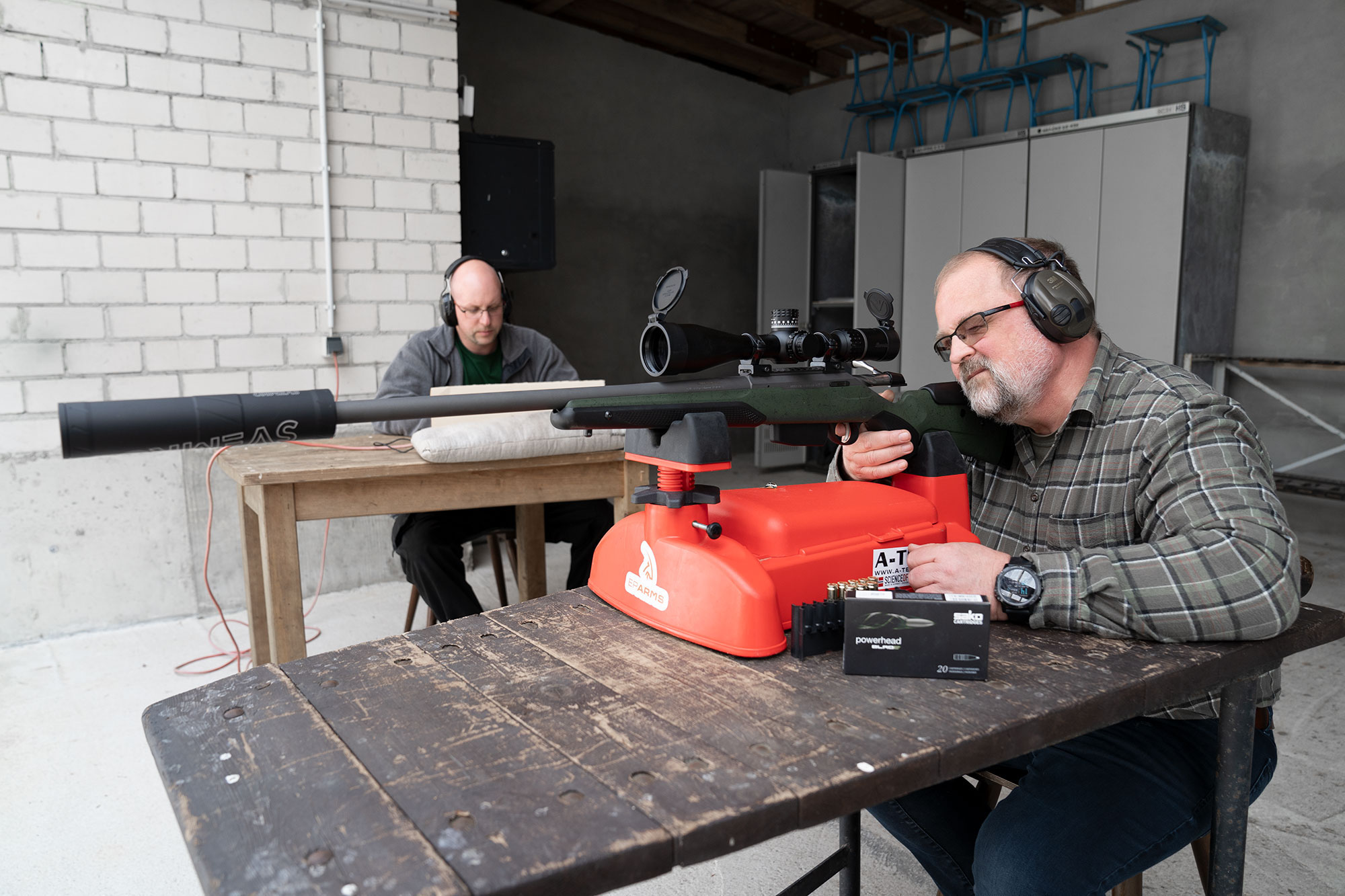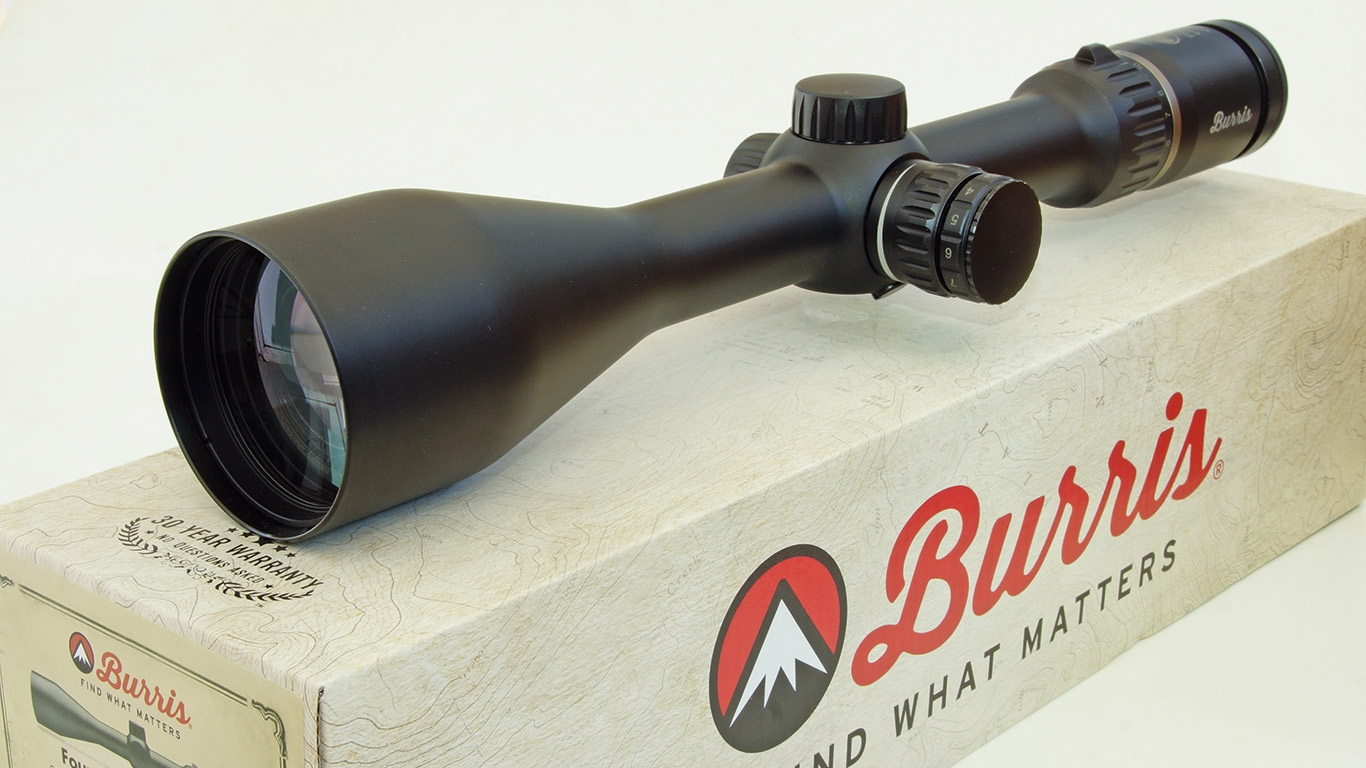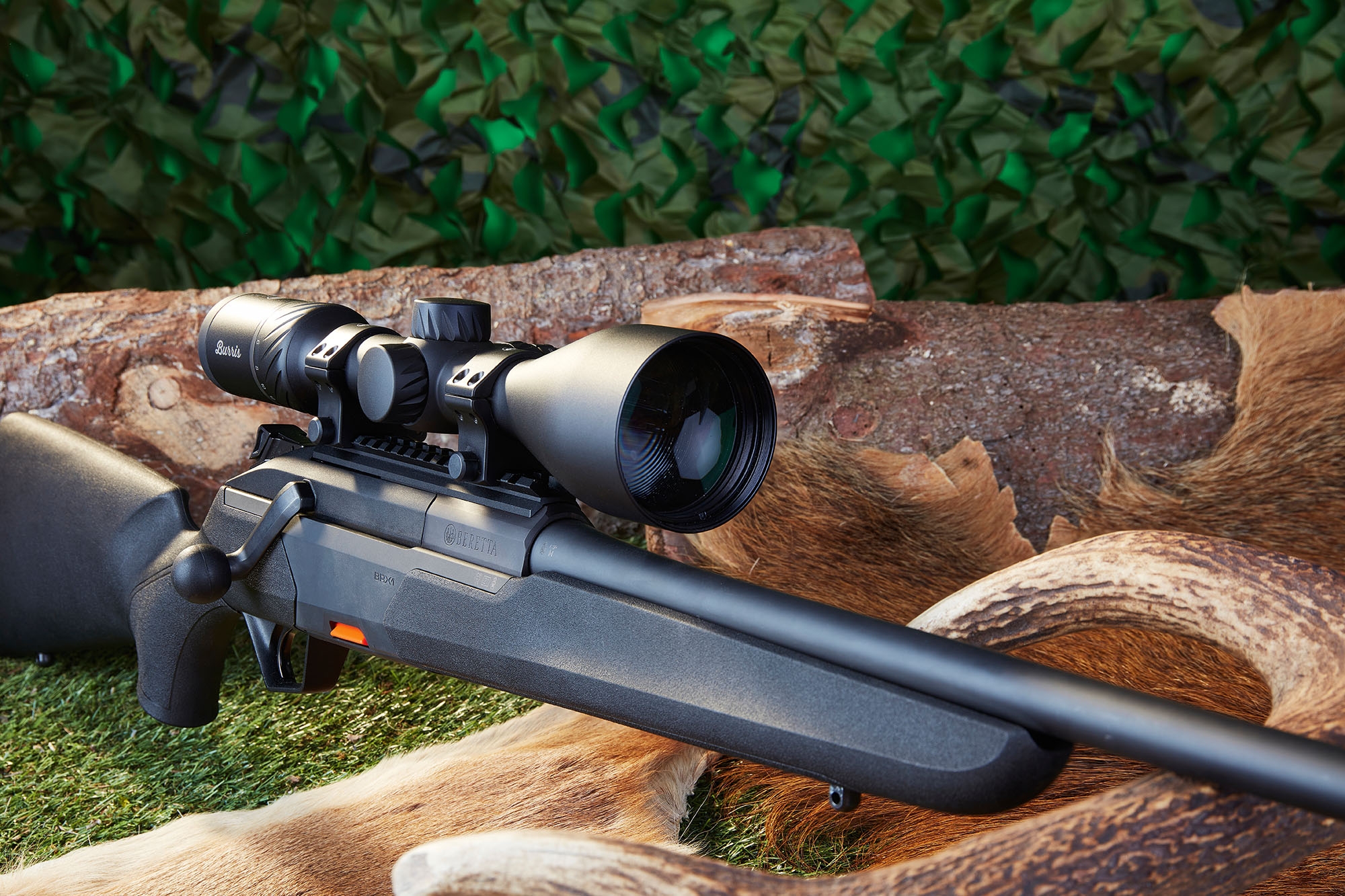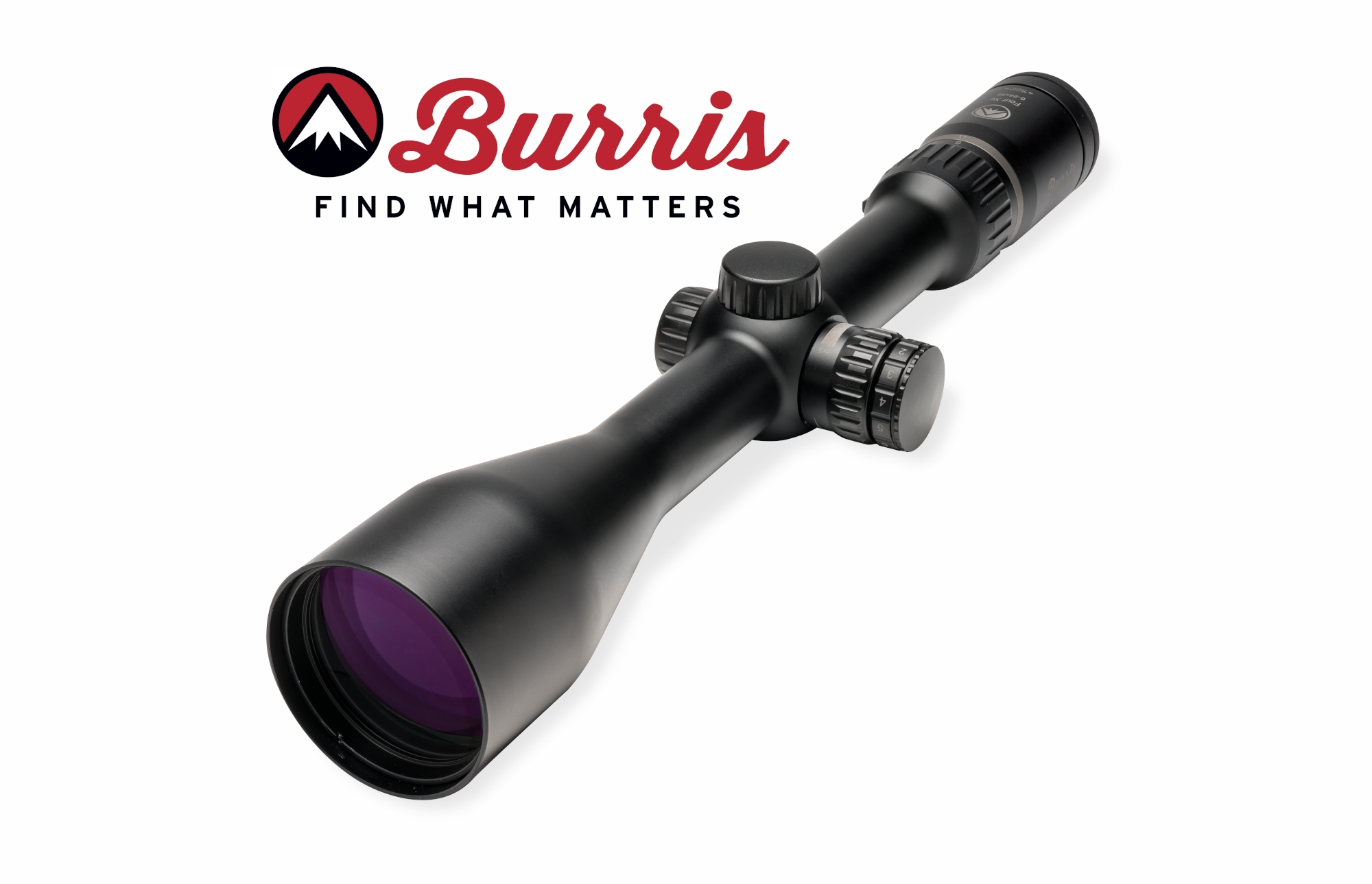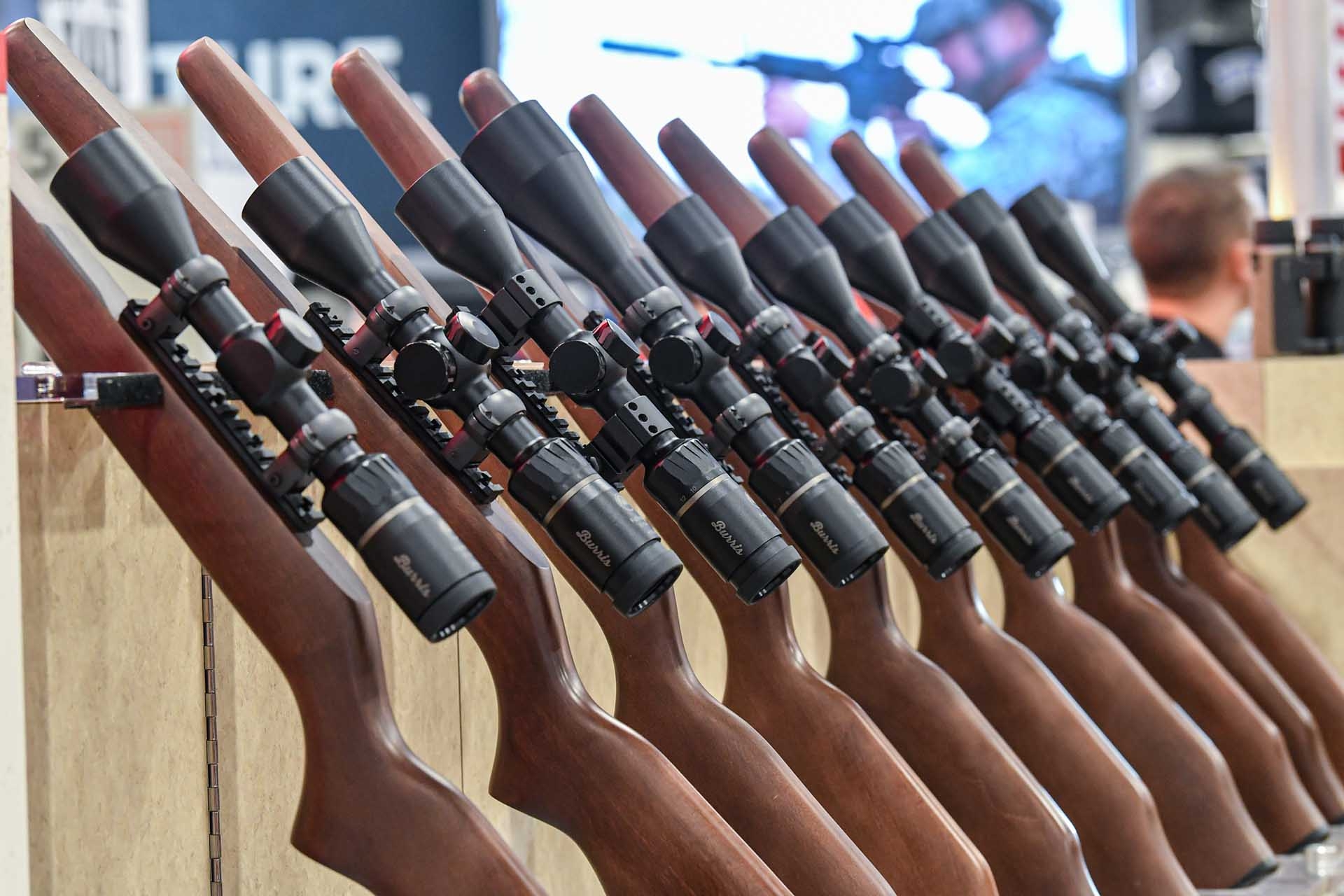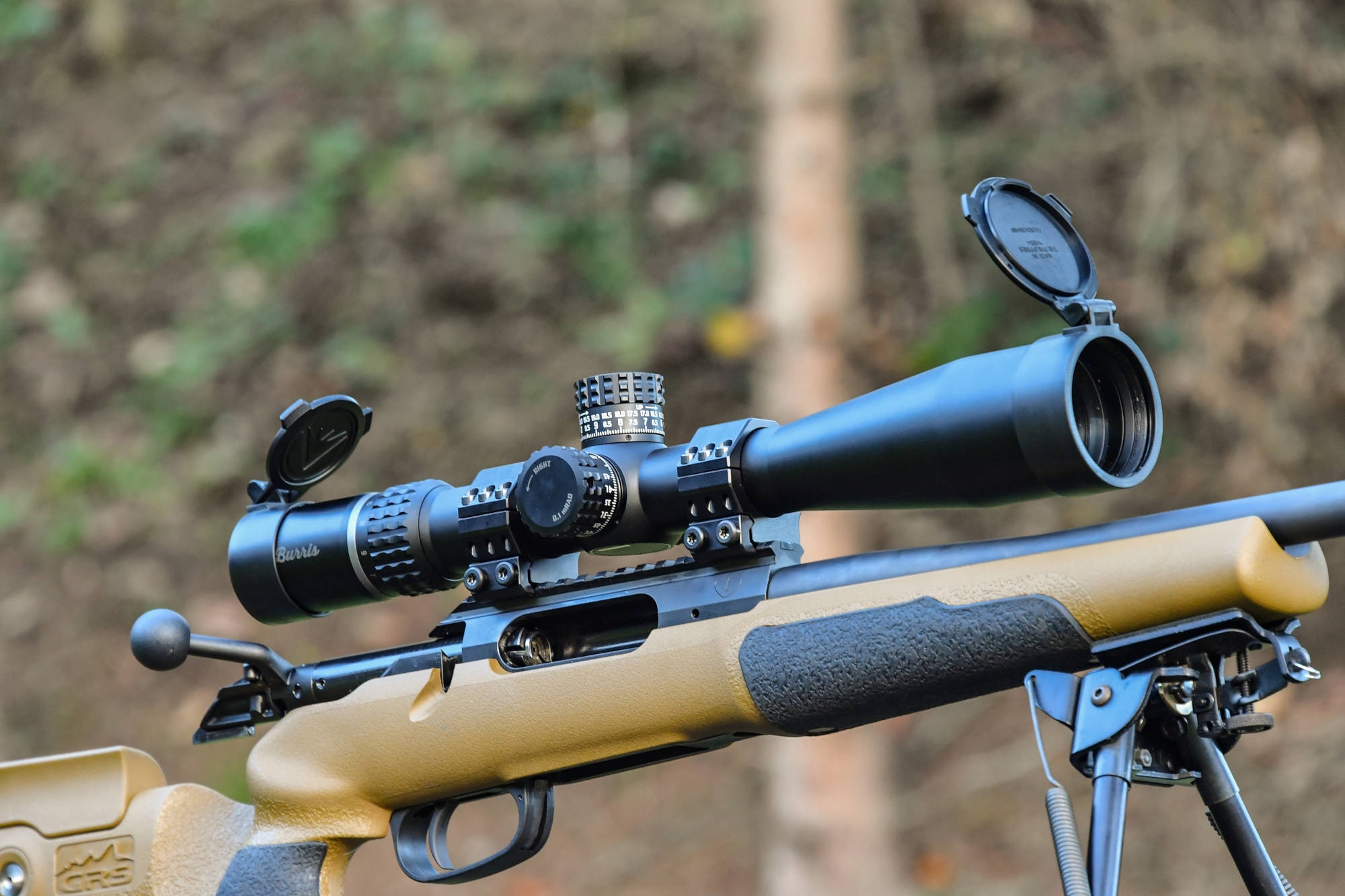"Laserscope" – in 2010, this was the name given to a completely new riflescope concept from the American optics manufacturer Burris. For the first time, a laser rangefinder was integrated into a civilian riflescope. The external design was only remotely reminiscent of a classic riflescope and was often referred to as a "spaceship". Continuously further developed and packed with more electronics, the sixth model in the series has been available since the beginning of 2024 under the model name "Eliminator 6" (4-20x52). In addition to the extended possibilities of the integrated ballistic computer, Burris has now gone "back to the roots" and designed a riflescope with a classic appearance.
Burris Eliminator 6 4-20x52 technical details
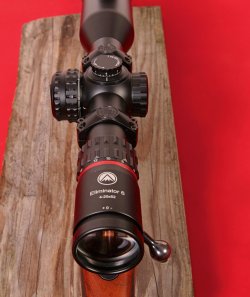
"Massive" was the first reaction after looking inside the box: 34-mm main tube, a length of 38 centimetres, large caps for the windage and elevation adjustment as well as the right-hand control turret and a weight of around 850 grams are certainly impressive. The scope of delivery includes a screw-in sun shade; if this is used, the scope is extended by 8 cm to a full 46 cm in overall length with an external objective lens diameter of 60 mm. The model designation already indicates the diameter of the objective lens, paired with a magnification of 4x to 20x. The magnification control is located in front of the eyepiece in the form of a handy and pleasantly wide rotating ring. The diopter adjustment is located in front of the eyepiece, but this can only be adjusted if the flip-up protective cap supplied is not fitted. Screw-on caps protect the height and side adjustment. The adjustment of the cleanly latching knobs is 1/8 MOA (Minute of Angle) per click in both elevation and windage with an overall adjustment range (in both axes) of 40 MOA. Zeroing the two scales via a (barely visible) release catch is complicated, especially as a suitable tool is unfortunately not supplied. A test using a Hensoldt collimator did not reveal any weaknesses in the repeat accuracy of the mechanical adjustment. On the left-hand side of the main tube is the parallax adjustment with markings from 25 yards to infinity. The parallax adjustment is preceded by the central control of the electronics, which is controlled by means of rubberised buttons. The larger of the three buttons activates the electronics, the laser rangefinder and the ballistic computer networked with it. There are also switches for setting the brightness setting of the aiming dot in the reticle. When the electronics are activated, the information field referred to by Burris as the "Head Up Display" appears in the upper area of the target image – more on this later. In addition to direct operation of the electronics on the riflescope, the Burris Eliminator can also be operated using a remote control (supplied) without changing the aiming position.
Burris Eliminator: shooting with a test rifle from Sako
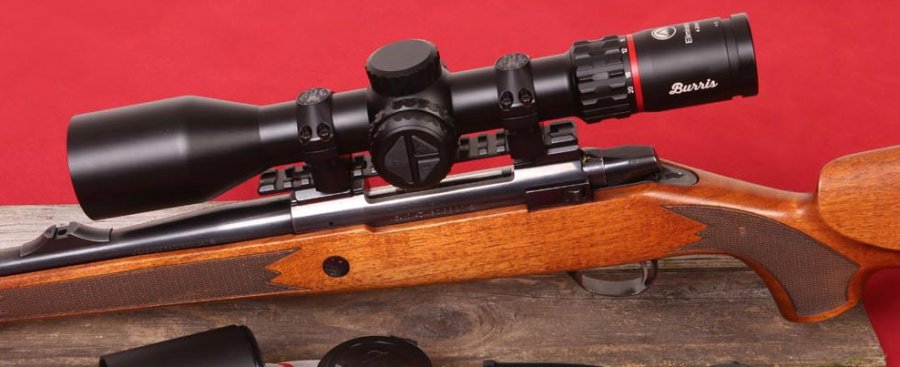
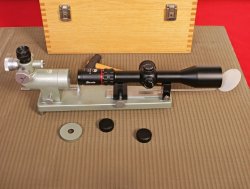
The practical test should show how this works and what the ballistic calculator and optics of the Burris Eliminator can achieve. Using mounting rings from Tier One, the Burris was mounted on an bolt-action rifle from Sako chambered in .30-06 Springfield. The combination of the rifle's accuracy and the caliber allows it to be used beyond the "magic" shooting distance of 100 meters. Preset by means of a boresighter, zeroing at 100 meters in a closed shooting range was quick, and the windage and elevation adjustment showed a clean click. The target image appeared bright and high-contrast in artificial light, and the reticle labelled X177 in the second focal plane provided a clean aiming point. To function reliably, the ballistic computer needs to be set to "spot", after which the electronics take care of everything else at varying distances. There were no deviations in the point of impact when changing the magnification of the test specimen.
Out on the hunting ground with the Burris Eliminator 6 4-20x52: How does the "Burris Connect" app work?

After successful firing at the range, the Eliminator was almost ready to head to the field. However, the ballistic computer must first be fed with the necessary data. This is easily done using a smartphone and the corresponding "Burris Connect" app. The connection to the scope is established via the Bluetooth interface. Permission for location tracking is mandatory for the connection; if this is not activated, nothing will work. The Head Up Display can be configured in the field of vision through the function menu, and the shape and display content of individual fields can be selected. The distance between the barrel axis and the optical centre of the riflescope is important for the correct calculation of the ballistic values; this can be saved under a created gun profile. The app provides access to an ammunition library in which almost every available factory cartridge can be found in countless calibers. Once selected and saved, the relevant data from the ammunition manufacturer is used for further calculation. However, it is also possible to use the measured or calculated values from handloads.
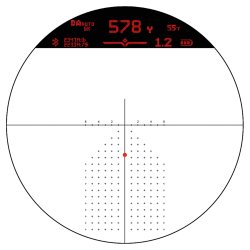
In the default setting, the display in the center shows the measured distance to the target point, while the illuminated dot on the reticle with 177 pixels shows the calculated aiming point based on the range and also includes wind drift. The wind drift can be determined via a general query of the environmental data, but can also be transmitted to the system as a measured value. A (zeroable) spirit level is used to indicate tilting in the display, and an inclinometer, a barometer and a thermometer are also built into the Eliminator. Which of the data is displayed can be entered in real time via the app, as can changing the measuring units. When the electronics are switched on, the illuminated dot, which can be adjusted in nine settings, acts as an aiming point and changes its position in the reticle according to the calculations. When sitting in the hunting ground at different times of day, the optics always provided a clear, bright and high-contrast image, while the magnification of up to 20x really comes into its own at greater ranges.
At the same time, a Zeiss hand-held device was used for comparison with the rangefinder built into the Burris. In an open part of the hunting ground, it was no problem to measure individual roebucks up to 300 meters away during the morning session; the comparison with the hand-held device showed marginal differences of a few metres. The display of the riflescope shows the calculated value for the velocity and the energy output of the bullet at the point of aim. A "Shot Call Marker" is also displayed, which warns the user if the velocity or energy output at the point of aim falls below preset limits. Operating the scope and the built-in computer is easy and intuitive after a little "playing around", and all the information provided is easy to grasp. The remote control supplied, designed to be attached to the stock, is useful. This proved difficult with the test rifle used due to the round fore-end, but it can also be held in the left hand without any problems when firing from a raised hide with the rifle rested. When the button on the remote control is pressed, a measuring cycle is carried out – without changing the aiming position.
Burris Eliminator 6 4-20x52 technical specifications and price
| Model: | Burris Eliminator 6 4-20x52 |
| Objective Lens: | 52 mm |
| Length: | 380 mm |
| Main Tube: | 34 mm |
| Reticle: | X177 |
| Adjustment Range: | 40 MOA |
| Elevation Adjustment Click Value: | 1/8 MOA |
| Windage Adjustment Click Value: | 1/8 MOA |
| Parallax: | 25 yards -∞ |
| Weight: | 850 g |
| Field of View (at 100 m): | 6.7 – 1.8 m |
| Eye Relief: | 8.8 - 10.1 cm |
| Price (as of Oct. 2024) | 2,799 euro |
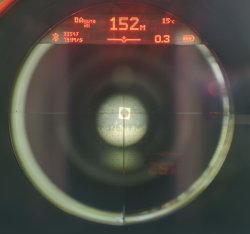
Conclusion: what the Burris Eliminator 6 4-20x52 can offer
Of course, the question arises as to the purpose of electronic aids in everyday hunting in most Europe, where shooting distances rarely exceed 100 meters. The situation is different for field and mountain hunting, where the support provided by the scope and the computer gives you the confidence to take a shot at longer ranges without having to rely on estimates and guesswork, because you can absolutely rely on the indicated aiming point.
If you get involved with the technology in the Burris Eliminator, you will get a "reasonably priced" riflescope in the truest sense of the word with very good optics and concentrated technology. Just compare what a Swarovski dS costs, for example. This is one of the reasons why the Burris Eliminator 6 quickly became a favourite companion on the hunting ground. Dismounting the test specimen for return was difficult. It hurts to say goodbye.



